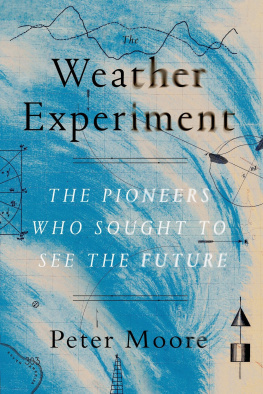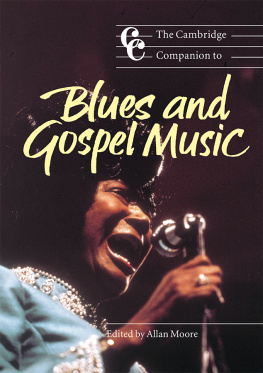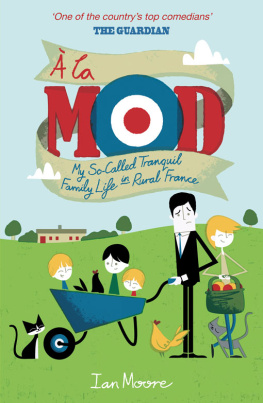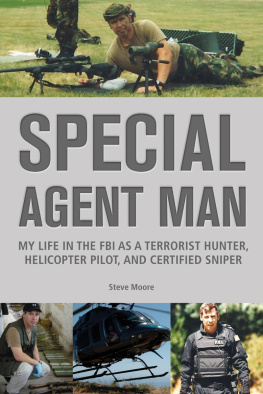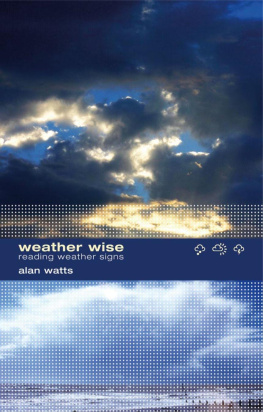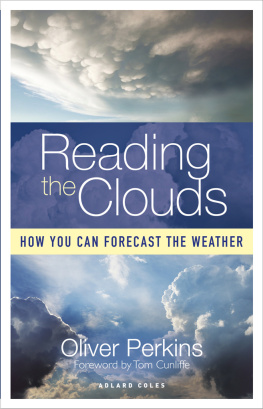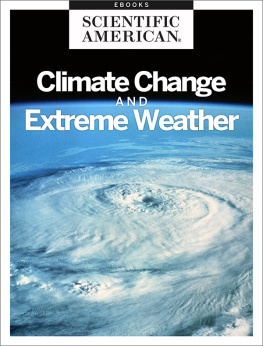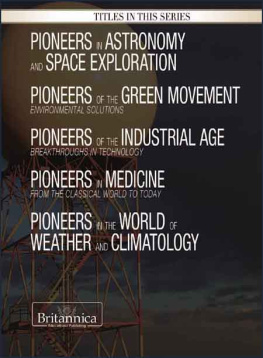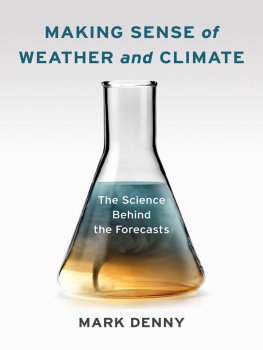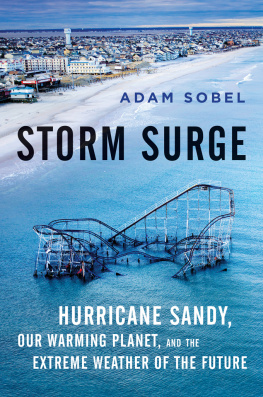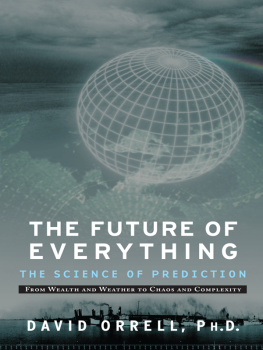
Thank you for buying this
Farrar, Straus and Giroux ebook.
To receive special offers, bonus content,
and info on new releases and other great reads,
sign up for our newsletters.

Or visit us online at
us.macmillan.com/newslettersignup
For email updates on the author, click here.
The author and publisher have provided this e-book to you for your personal use only. You may not make this e-book publicly available in any way. Copyright infringement is against the law. If you believe the copy of this e-book you are reading infringes on the authors copyright, please notify the publisher at: us.macmillanusa.com/piracy.
To my mother
A fool, you know, is a man who never tried an experiment in his life.
ERASMUS DARWIN TO RICHARD LOVELL EDGEWORTH
We see nothing truly till we understand it.
JOHN CONSTABLE
The Weather Clerk himself, after a life of practice, as well as study, values the forecasts more and more as a scientific ground on which to hoist the drum.
ADMIRAL ROBERT FITZROY
Unless otherwise stated, images come from the authors private collection.
Illustrations in the text
Plate Section
In the nineteenth century temperature was measured in Fahrenheit. Ice melted at 32F (0C), water boiled at 212F (100C), and the temperature of the human body was 98F (37C). In Britain and the United States barometers measured atmospheric pressure in inches of mercury. The length of a column of mercury at mean sea level would be just beneath 30 inches (1013 millibars). Thirty and a half inches of mercury was typical high pressure. Twenty-nine and a half inches was typical low pressure.
I have used original weights and measures throughout. Most will be familiar to readers, except perhaps a fathom, which is approximately 6 feet or 1.83 metres, and an Irish Mile which is 1.27 statute miles.
Gttingen Mean Time was adopted as a standard for simultaneous magnetic observations in the 1830s and was used on occasion in the 1840s for meteorology before it was replaced by Greenwich Mean Time.
While writing this book I was awarded a residency at Gladstones Library at Hawarden in Flintshire. For a month in early spring 2014 I lived in the library, an exquisite Gothic Revival building just across the River Dee into Wales. I worked every day on a creaking first-floor gallery surrounded by 32,000 of Gladstones own annotated books famously transported to the library in a wheelbarrow by the Grand Old Man himself. For me there could have scarcely been a better place to dream, read or write about Victorian society. To Peter Francis, for the award and several conversations about weather and religion, I am enormously grateful. For help navigating the collections, which yielded several undiscovered FitzRoy letters, and for permission to republish illustrations, Im indebted to Louisa Yates and Gary Butler. Thanks are also due to the indomitable trio of Sin Morgan, Phillip Clement and Ceri Williams, as well as the librarys always cheerful, always helpful, other employees.
For permission to consult and quote sources I would like to acknowledge the British Library, the National Library of Ireland, the Royal Society (Keith Moore), the Huntington Library (Vanessa Wilkie), the Beinecke Rare Books Library at Yale (Sandra Markham and Anne Marie Menta), the Wellcome Library and the National Meteorological Library and Archives in Exeter. For access to his set of Elias Loomis weather charts of the 1836 storm and for his enthusiasm for the subject, Im grateful to my intrepid friend David Goldsmith, whose own weather project is eagerly anticipated.
I would also like to thank Sheila Newman, Jo and Ben in Wexford, Dame Julia Slingo, David Whiting, Julie Wheelwright, and, for all her sagacity and good humour, Sarah my fellow Dolphinite. Dr Christopher Prior of the University of Southampton has once again endured an early draft and returned with valuable advice. Professor John Thornes of the University of Birmingham was also an enormous help. In an age when cloud spotting has been elevated in popularity to the levels of two centuries ago, and people are again faced with the dilemma of distinguishing altocumulus from stratocumulus, his book on John Constables skies provides a superb introduction to meteorological science. Ever since a serendipitous meeting in 2012 John Thornes has played a valued part in this project both as a mine of information and a source of encouragement. While he has rescued me from the odd meteorological blunder, any that remain are my own responsibility.
Im fortunate to have the support and terrific expertise of all at Peters Fraser & Dunlop. Particularly my literary agent, Annabel Merullo, but also Rachel Mills, Laura Williams, Marilia Savvides, Kim Mridja, Silvia Molteni and James Carroll. At Farrar, Straus and Giroux Id like to thank Mitzi Angel, Jeff Seroy, Stephen Weil, Daniel del Valle and Will Wolfslau, as well as Katja Scholz at Mareverlag.
The greatest debt is due to Juliet Brooke, my wonderful editor at Chatto & Windus, who has nurtured this book from the beginning and challenged me at all the right times. I am also grateful to Clara Farmer, Susannah Otter, Kate Bland and Mikaela Pedlow, and to Kris Potter for the fabulous jacket design of Chattos edition.
A special thanks to Claire for tolerating a home crammed with nineteenth-century journals and other weather paraphernalia. Alongside everything else, her unquenchable optimism and editorial instincts have remained prized commodities. When London becomes too much I am lucky to have a Staffordshire hideaway with a quiet desk and a familiar bed to escape to, not forgetting a father who often seems as encyclopaedic as Francis Beaufort.
My mother, raised on the raw east Yorkshire coast, still watches the sky with a knowing eye. She would often call me up from the comfort of the sofa in my childhood to savour a red sunset or to glimpse a curious cloud. This book, dedicated to her, is my riposte.
We are never far from a weather forecast. An average Briton on an average day might encounter five or six of them, broadcast, printed, tweeted, passed on second hand. You can wake in the morning to the sparkling enthusiasm of a breakfast weather presenter, and be lulled off at night to the mantric rhythms of Radio 4s shipping forecast and its signature tune, Sailing By.
Whatever the medium, the weather forecast is an ingrained component of modern life, its ever-evolving projection of what the atmosphere has in store always at hand. As a rule forecasters are clean-cut, bright-eyed, full of empathy and concern when something grim is on the way. The kind tenor of their broadcasts, the sharp suits, the mild manners, the crisply delivered chunks of meteorological caution, can fool you into thinking they are paragons of conservatism. The reality is completely different. These forecasters are in fact the product of one of the most notorious and daring scientific experiments of the nineteenth century.
It is a strange thought. Such is the ubiquity of the forecast today it is difficult to imagine an age before it existed. The bright, breezy afternoon of 24 November 1703, for example, when the Great Storm the most intense ever to strike England was hurtling wolf-like towards the west coast. Hardly anyone could have foreseen what was about to happen. Winds stripped lead from church roofs, windmills were blown with such force that they spun into flame like giant Catherine wheels. Cattle and sheep were swept over hedges. Ships were blown across the North Sea from Harwich to Sweden, and others were driven on to the Goodwin Sands where an estimated 2,000 were swallowed up by the waves. No final tally was recorded but it is thought 10,000 died in a handful of hours. For Daniel Defoe it was a disaster far worse than the Great Fire of London.
Next page
